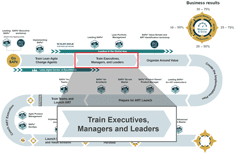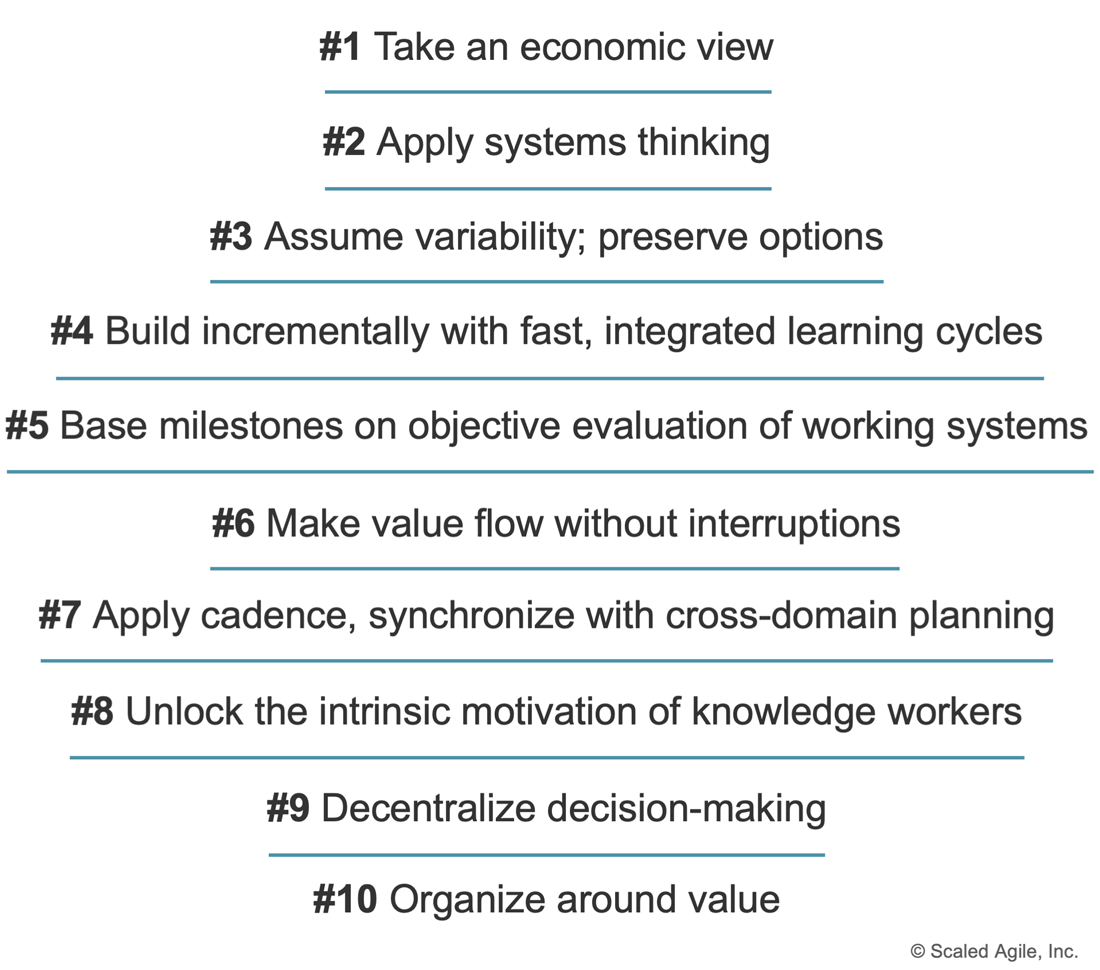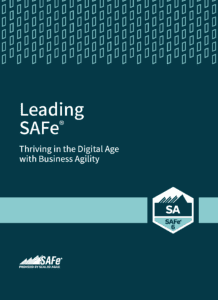
The questions is ‘Does the group include enough proven leaders to be able to drive the change process?’
—John Kotter
Train Executives, Managers, and Leaders
This is article four in the SAFe® Implementation Roadmap series. Click here to view the entire roadmap.
The previous Implementation Roadmap article, Create a Lean-Agile Center of Excellence, described the four steps needed to create a guiding coalition:
- Train a number of Lean-Agile change agents as SAFe Practice Consultants (SPCs)
- Charter a Lean-Agile Center of Excellence (LACE)
- Train executives, managers, and other leaders
- Engage trained leaders to lead the change as described in Lead in the Digital Age
It described how SPCs—acting as change agents—can ignite transformation within an enterprise. But they alone do not constitute a “sufficiently powerful guiding coalition” for change. Other stakeholders and senior executives must step in, step up, and lead the change.
After all, as Deming noted, “It is not enough that management commits themselves to quality and productivity; they must know what it is they must do.” This article describes the second part of the coalition—the need and mechanism to train executives, managers, and leaders.
Details
Strong leadership is needed to implement any change in an organization successfully. In the context of SAFe, some of these leaders will provide direct and ongoing sponsorship for the change by participating in the LACE; others will be directly involved in implementing SAFe or will be leading, managing, and influencing the other players in the transformation. Their role could include participating directly in launching Agile Release Trains (ARTs). Or, it could mean that they will work at higher levels to eliminate impediments in the company’s current governance, culture, and practices. All of these stakeholders need the knowledge and skills to lead—rather than to follow—the implementation.
Exhibit the Lean-Agile Mindset
To effectively implement SAFe and to provide the inspiration for relentless improvement, the enterprise’s leaders must embrace the Lean-Agile Mindset. This mindset includes:
- Thinking Lean – Much of the thinking in Lean is represented in the SAFe Lean-Agile Mindset. Initially derived from Lean manufacturing, the principles and practices of Lean thinking applied to software, product, and systems development are now deep and extensive.
- Embracing agility – SAFe is built entirely on Agile teams and leaders’ skills, aptitude, and capabilities. The Agile Manifesto provides a unified value system that has helped introduce Agile practices into mainstream development.
Putting these concepts into practice has proven to be a powerful recipe. Still, when leaders support the Lean-Agile mindset only through words and not actions, their efforts are quickly recognized as a half-hearted attempt at change. When a leader’s actions don’t match their words, they can produce the opposite of the intended effect and harden people against change. When that happens, the journey will end before it begins without leading to the personal or economic benefits of SAFe.
Apply Lean-Agile Principles
For an organization to successfully integrate SAFe, management must understand and reinforce its values. Leaders are expected to embrace and apply the ten principles of SAFe, as highlighted in Figure 1 and its accompanying article, SAFe Principles.

Figure 1. SAFe Lean-Agile Principles
For more on the role of leadership in a SAFe transformation, read the Lean-Agile Leadership foundation article.
Learning New Skills
All of the above raises a question: how do leaders learn these new skills? The two-day class, Leading SAFe®: Leading the Lean-Agile Enterprise with the Scaled Agile Framework, is designed for this purpose.
This course teaches leaders the SAFe Lean-Agile mindset, principles and practices, and the most effective leadership values for managing the new generation of knowledge workers. They will also learn how to:
- Thrive in the Digital Age with Business Agility
- Build a Foundation with Mindset, Values, and Principles
- Establish Team and Technical Agility
- Build Solutions with Agile Product Delivery
- Explore Lean Portfolio Management
- Lead the Change
It’s important to understand that this class is just the beginning of the journey. As best-selling author, Rick Warren reminds us, “All leaders are learners. The moment you stop learning, you stop leading.” Wise advice for anyone wanting the full benefits that are achievable through SAFe. To this end, the class provides a recommended reading list and many other activities and exercises to help emerging Lean-Agile leaders master these new skills. Leaders are also responsible for building a Continuous Learning Culture as an organizational competency, starting with a commitment to their personal learning journey.
To test their knowledge, attendees can take an exam and, upon passing, become Certified SAFe® Agilists (SAs). This gives them access to SAFe Studio, which hosts various assets, such as training videos and a dedicated forum for sharing knowledge.
Moving Forward
By making the first four ‘critical moves’ in the SAFe Implementation Roadmap—Reaching the Tipping Point, Training Lean-Agile Change Agents, creating a Lean-Agile Center of Excellence (LACE), and Training Executives, Managers, and Leaders—the enterprise is well on the path toward success. However, one more step is needed to complete that powerful guiding coalition: engage trained leaders to lead the change described in Lead in the Digital Age. That is the topic of the next article in this series.
This article serves as a launching pad to explore these steps in detail and understand how to apply them to specific implementations.
Learn More
[1] Knaster, Richard, and Dean Leffingwell. SAFe 5.0 Distilled, Achieving Business Agility with the Scaled Agile Framework. Addison-Wesley, 2020.
Additional Resources
To learn more about Leading SAFe, and to find a class near you, click here.
Last update: 22 November 2022
